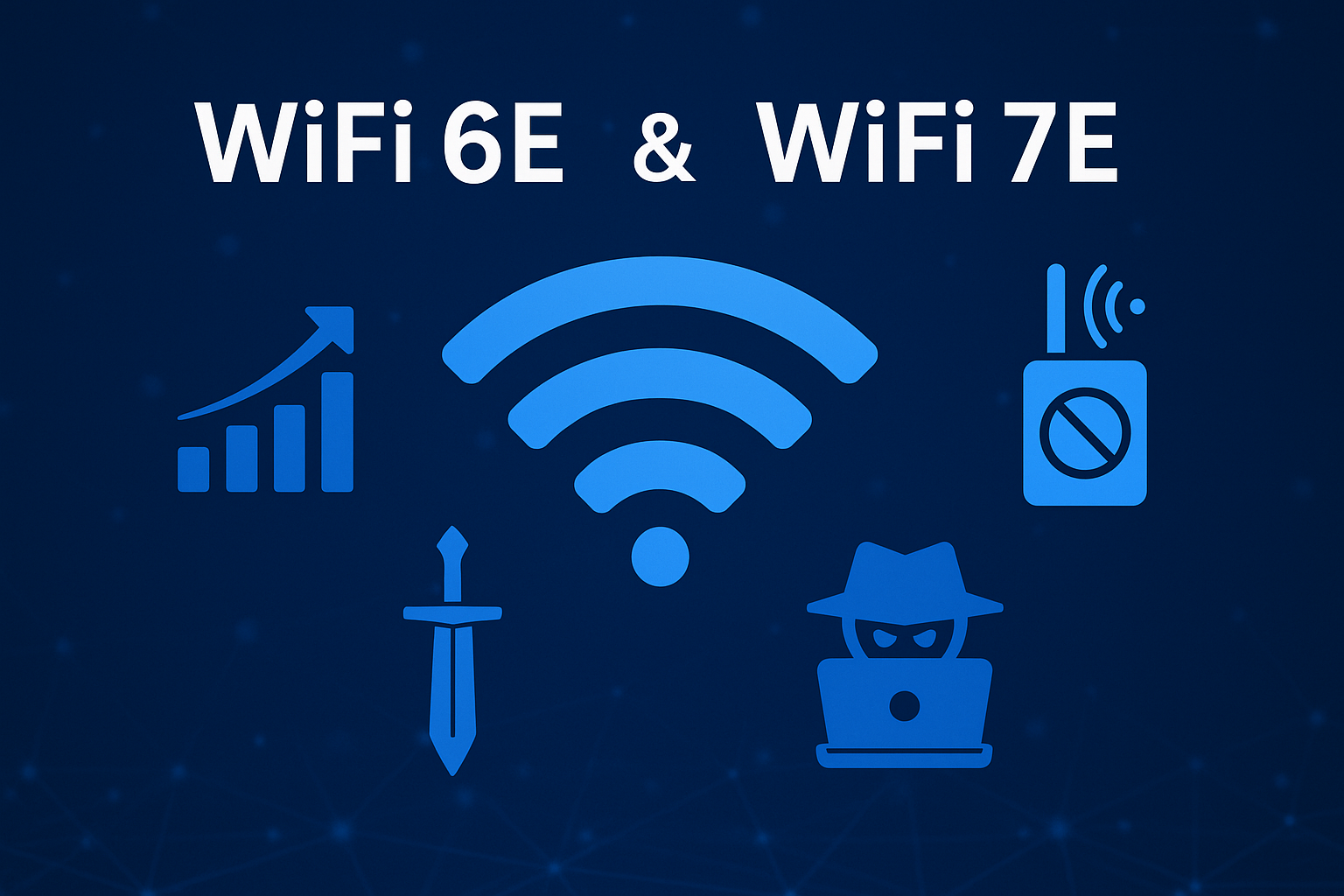Most people are familiar with 2.4GHz and 5GHz Wi-Fi – those two mysterious bands you see when connecting your phone or laptop. But lately, you might have heard new buzzwords like WiFi 6E or even WiFi 7E. What are they? Are they just faster versions, or is something much bigger happening behind the scenes?
Let’s peel back the layers of wireless evolution – and explore not only the benefits but also the hidden risks that come with this next-gen technology.
From 2.4G to 7E – The Rapid Evolution of WiFi
Wi-Fi has been evolving faster than most of us realize.
- 2.4GHz was the workhorse of the early 2000s – long range, but slower speeds and lots of interference.
- 5GHz came next, offering faster connections but at the cost of reduced range.
- WiFi 6 (802.11ax) took things further, improving efficiency, capacity, and speed – perfect for crowded networks.
- And then came WiFi 6E, unlocking a whole new 6GHz frequency band – like opening a secret highway just for modern devices.
Now, WiFi 7E (802.11be) is on the horizon, pushing data rates beyond 40 Gbps, minimizing latency, and promising ultra-stable performance for AR, VR, and smart city applications.
In short: WiFi 6E expanded the roads; WiFi 7E built superhighways.
What Makes WiFi 6E and 7E So Special?
The magic lies in the 6GHz spectrum – a frequency range that’s not cluttered by microwaves, Bluetooth devices, or your neighbor’s router. It allows for:
- Wider channels (up to 320 MHz) for massive data throughput
- Lower interference, especially in dense environments
- Improved latency for gaming, streaming, and IoT applications
- Enhanced security protocols, including WPA3 and future encryption layers
For businesses, that means smoother video calls, faster data transfers, and more reliable IoT systems. For consumers, it means less buffering and faster connections – even in device-heavy households.
The Double-Edged Sword of Wireless Innovation
But as with every technological leap, there’s a catch. The faster and broader Wi-Fi gets, the larger the attack surface becomes.
Hackers and cybercriminals are already exploiting:
- Unsecured IoT devices connected to advanced Wi-Fi networks
- Bluetooth and Wi-Fi vulnerabilities for eavesdropping or tracking
- Fake access points designed to steal data in public spaces
In essence, while WiFi 6E and 7E make your digital life smoother, they also create new doors that bad actors can try to open.
🛡️ Signal Jammers – The Silent Guardians of Privacy
In sensitive environments – boardrooms, R&D labs, government facilities – even the best encryption isn’t enough. That’s where Signal jammers Blockers for WiFi Bluetooth come in.
These devices can temporarily block Wi-Fi, Bluetooth, or even drone signals, acting as a digital shield against unwanted access, remote surveillance, or data leaks.
Think of them as the “mute button” for invisible wireless noise. When properly used, they protect confidentiality and prevent external interference – especially in places where every byte of information matters.
The Future: Smart Connectivity or Smart Surveillance?
WiFi 7E will soon power smart homes, autonomous cars, and interconnected cities. But as technology integrates deeper into our private and professional lives, we face a growing question: Who really controls the connection – you or the network?
As consumers, understanding both the capabilities and vulnerabilities of our wireless systems is the first step toward digital independence.
Conclusion: Power Comes with Awareness
WiFi 6E and 7E mark a new era of speed, stability, and interconnectivity. But just like any powerful tool, they demand responsibility and awareness. Stay connected – but stay protected.
And if privacy truly matters to you, remember: Technology should serve you, not spy on you.

